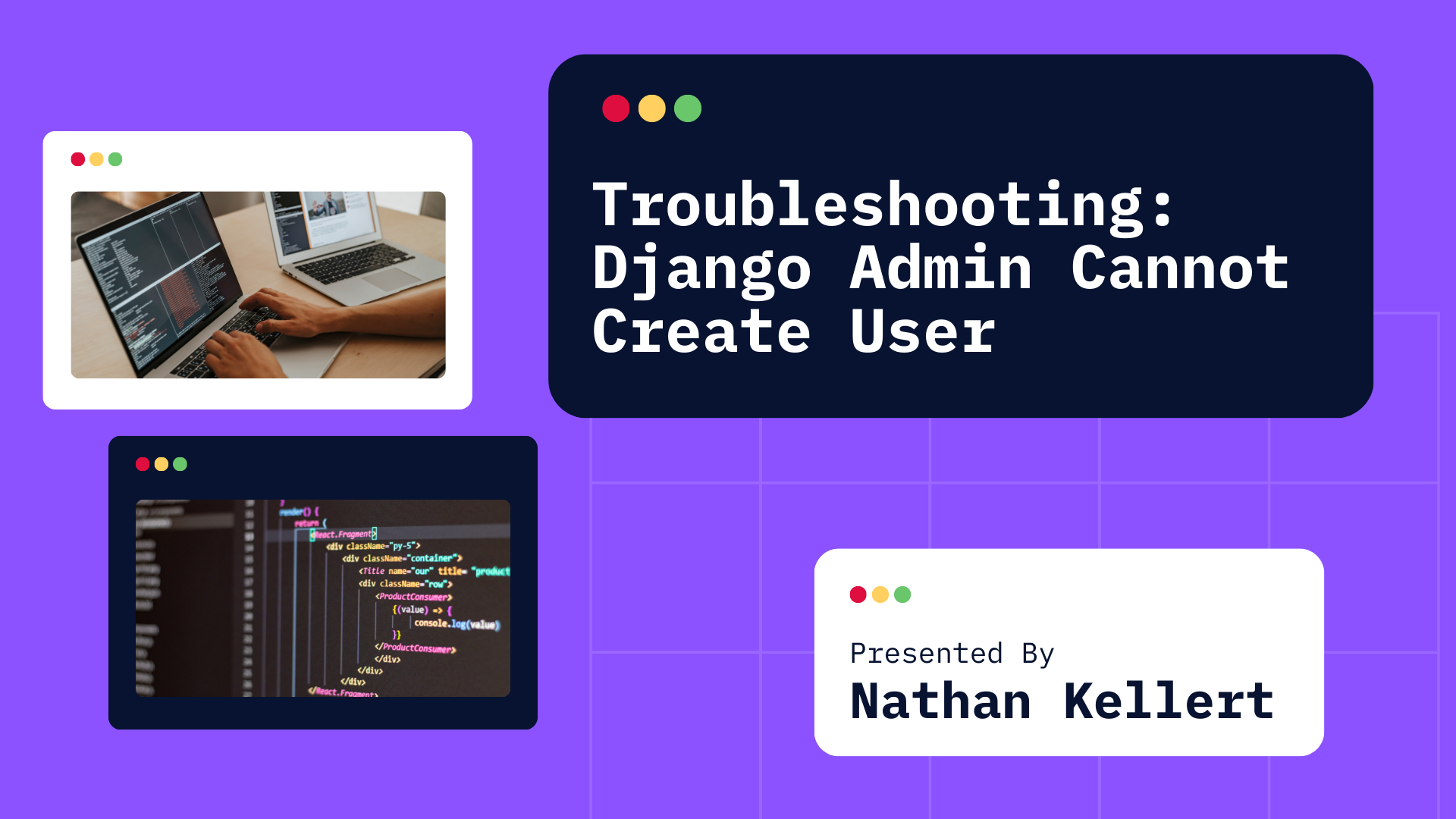
Facing issues where Django Admin cannot create users? This guide explains common causes and solutions to get your Django admin user creation back on track.
When using Django Admin to manage users, you may encounter issues where the admin interface allows you to view the user list but fails to create new users.
Table of Contents
This problem can be caused by several factors, ranging from permission issues to configuration errors. Let’s walk through some potential causes and solutions for this issue.
9 Ways to Fix Django Admin Cannot Create User
So right now I’m going to share 9 Solutions to fix Django Admin Cannot Create User and they are as follows:
1. Check Django Admin Permissions
Django’s admin system relies heavily on user permissions. If the user account you’re using to create a new user doesn’t have the necessary permissions, you won’t be able to create users.
Solution:
- Make sure the user you’re logged in as has the
Add userpermission. - You can check and update permissions by navigating to the
Usermodel in the Django Admin and editing the user. - Ensure that the user has the “Can add user” permission under Permissions.
If you’re logged in as a superuser, you should already have this permission, but if you’re using a regular staff user, you’ll need to check the permissions.
How to check:
- Go to Admin Panel → Users.
- Edit the user account you’re logged in with.
- Under the Permissions section, ensure Can add user is checked.
If you’re working with a non-superuser account, you may need to manually assign the “Can add user” permission.
2. Make Sure the User Model is Registered
In Django, the User model must be registered in the admin.py file of your app in order to be accessible through the admin panel. If it’s not properly registered, you won’t be able to create users through the admin interface.
Solution:
- Ensure that your
Usermodel is registered in the admin configuration. - Check the
admin.pyfile of the app where yourUsermodel is defined and make sure it looks something like this:
from django.contrib import admin
from django.contrib.auth.models import User
admin.site.register(User)
If you are using a custom user model, make sure it is properly registered in the admin.py file:
from django.contrib import admin
from .models import CustomUser
admin.site.register(CustomUser)
3. Check for Errors in the forms.py (If You Have a Custom User Form)
If you’re using a custom user model or a custom user creation form via forms.py, you might be facing an issue due to a misconfiguration in the form fields or validations.
Solution:
- Check if your form (such as a custom
UserCreationForm) is correctly defined and that it inherits from the appropriate base form.
For instance, here’s how a basic custom form should look:
from django import forms
from django.contrib.auth.forms import UserCreationForm
from .models import CustomUser
class CustomUserCreationForm(UserCreationForm):
class Meta:
model = CustomUser
fields = ['username', 'email', 'password1', 'password2']
Ensure that you’ve implemented form validation correctly, especially if you’re overriding the save() method or adding custom fields to the user creation form.
4. Database Migrations
If your Django project is not up to date with database migrations, the User model might not be properly created in the database, and this can prevent user creation.
Solution:
- Run
makemigrationsandmigratecommands to ensure that all the necessary database migrations have been applied:
python manage.py makemigrations
python manage.py migrate
This will ensure that the database schema matches your models and that no migrations are missing.
5. Check for Django Version Compatibility
If you’re using a custom User model or any third-party apps for authentication, there might be compatibility issues with the version of Django you’re using.
Solution:
- Ensure that your version of Django is up-to-date and that any third-party authentication apps you are using are compatible with that version.
- To check your Django version, run:
python -m django --version
If needed, you can update Django with:
pip install --upgrade django
6. Browser Console Errors
Sometimes, the issue may not be on the Django side but rather a front-end issue, such as JavaScript errors preventing form submission.
Solution:
- Open your browser’s Developer Tools (F12) and check the Console for any JavaScript errors when trying to create a user.
- If you see JavaScript errors (like issues with form submission or validation), those errors will need to be fixed before the form can be submitted properly.
7. Check for Custom Admin Interface Configuration
If you’ve customized the Django admin interface for users, check if there are any customizations or overrides that might interfere with the user creation process.
For example, you might have overridden the save_model method in the custom admin class, which could be causing issues with creating users.
Solution:
- Check any overrides in
admin.pyand remove or debug the custom code that might be affecting user creation. For instance:
class CustomUserAdmin(admin.ModelAdmin):
# Custom fields or overridden methods
pass
admin.site.register(User, CustomUserAdmin)
8. Check for Middleware or Third-Party Authentication Issues
If you are using custom middleware or third-party authentication apps (like django-allauth, django-rest-framework, etc.), there could be issues with how these apps manage user creation.
Solution:
- Review any middleware or third-party apps that might be interfering with user creation. Make sure the relevant middleware is correctly configured and that no conflicts are occurring.
9. Check the Admin Form Configuration
If you’ve customized the user creation form, you might have incorrectly defined form fields or a validation issue causing user creation to fail.
Solution:
- Check that the Admin class in admin.py is correctly using the appropriate form for user creation.
from django.contrib.auth.forms import UserCreationForm
class CustomUserAdmin(admin.ModelAdmin):
add_form = UserCreationForm # Custom user creation form
admin.site.register(User, CustomUserAdmin)
Conclusion
If you’re facing issues with Django Admin not creating users, the problem could stem from various sources, including permissions, misconfigurations, or issues in custom forms.
By following the steps outlined above, you can troubleshoot and resolve the problem, ensuring that your admin interface works smoothly for creating new users.
By addressing potential issues with permissions, form registration, migrations, and browser errors, you should be able to pinpoint and fix the root cause of the problem.
Let me know if you need further help with specific errors or configurations by commenting on this post.







